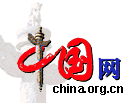Most families in Beijing will each have a car by 2020, which works out to more than 5 million vehicles on the capital's streets.
And you think your commute now is difficult.
But all is not doom and gloom because, according to a report issued by the Beijing municipal government, a new transport model will be in operation by then.
Among the features of the new transport model:
? Six north-south highways to link the ring roads;
? Thirteen huge parking lots along the Fifth Ring Road with connecting bus or metro services to downtown destinations;
? More subways and bus lines to the city's suburbs.
One of the goals for 2010 is to have the closest bus stop to the downtown area no more than an eight-minute walk away. Further, bus-to-bus transfers will be within a 300-meter walking distance.
The Beijing Transport Development Compendium, a 57-page report issued by the municipal government, gave a specific blueprint for transport development over the next 15 years.
According to the compendium, the municipal government spent 140 billion yuan (US$16.8 billion) on transport infrastructure development between 1993 and 2003. That was some 5.3 percent of Beijing's gross domestic product during that period.
But 80 percent of that money went to developing transport infrastructure inside the Second Ring Road, where congestion is the worst due to its highly built-up commercial and residential areas.
As a result, the facilities and traffic patterns outside that area have been left far behind. The compendium says that more urban public facilities and entertainment sites will be developed in areas beyond the Third Ring Road.
The compendium aims to utilize scientific and reasonable traffic design and development to solve the city's problems without paralyzing future generations' ability to do the same, said Liu Xiaoming, deputy director with the Beijing Municipal Commission for Communication.
The blueprint for the capital follows a philosophy known as transit-orientated development (TOD), a concept that provides for an expansion of urban areas in line with the layout of traffic infrastructure and facilities.
The concept has been used effectively in many cities in the world, including London, Paris, Tokyo and Seoul.
According to the philosophy, a city is divided into neighborhoods, each with public transport arteries as its primary focus, and traffic pattern for vehicles is built around them.
"TOD adoption is a global trend in maintaining sustainable development in cities," said Shao Chunfu, a professor at Beijing Jiaotong University.
According to Shao, the urban traffic design used to be subordinate to the city's development. Now, it gets priority in guiding urban growth.
However, progress usually takes a decade to show any positive effects, he added.
(China Daily June 14, 2005)

